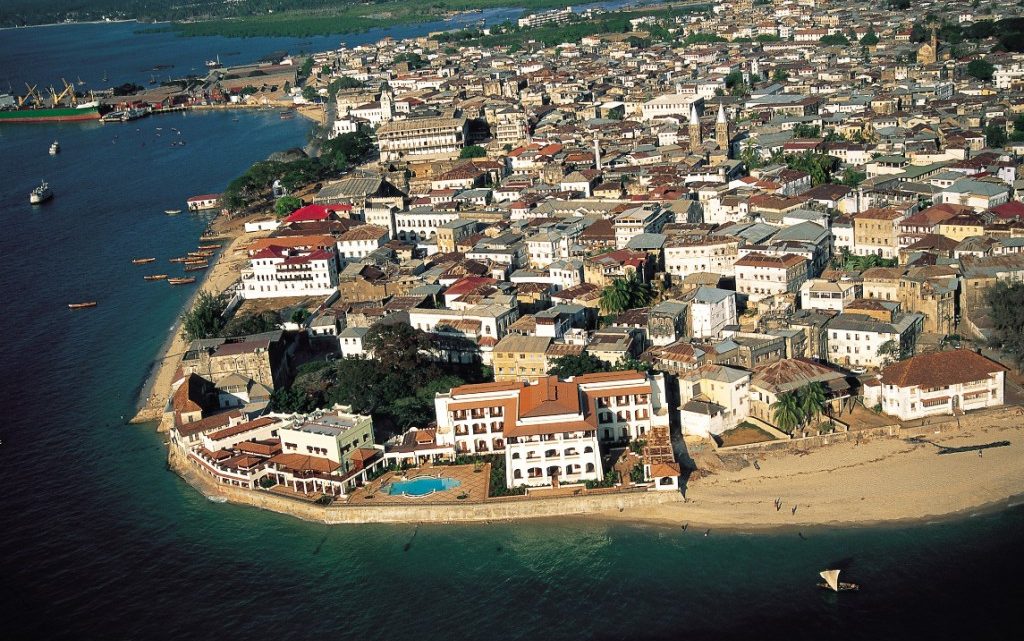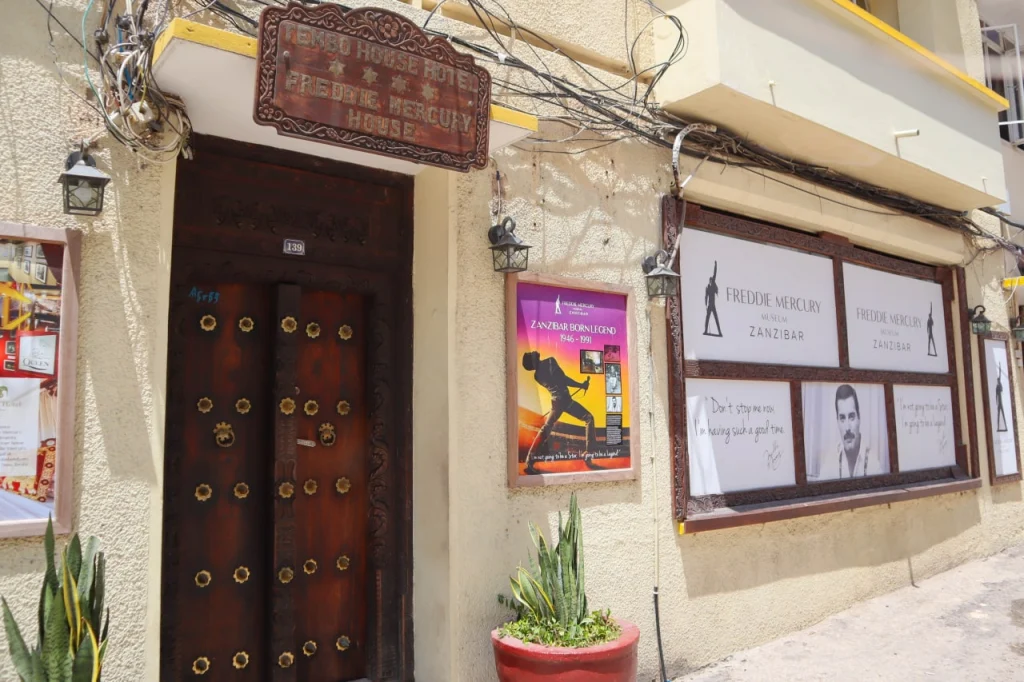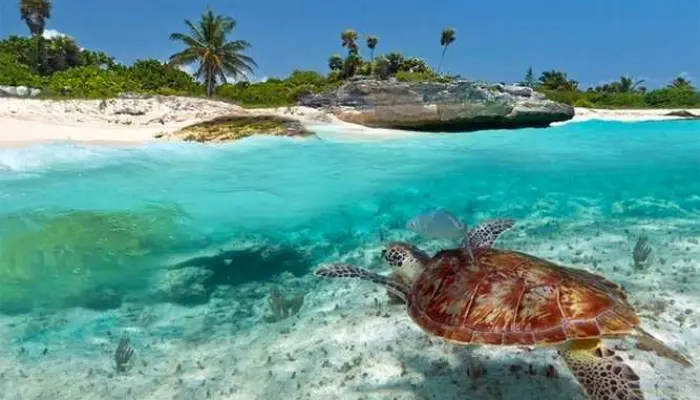The real adventures in this journey began in its final part, with the departure to the island of Zanzibar. According to the plan, we were supposed to fly directly to the island from Arusha airport, but due to some reasons, no longer significant, the route underwent a complete change. There was no plane from Arusha, and we returned to Kilimanjaro by jeep. There, we waited for the chance for a flight to pick up our group to Dar es Salaam. After a long wait and searches, as if we were in a minibus rather than a plane, we found such a flight, going there to get us to Dar es Salaam. The next morning from there, a ferry was departing to Zanzibar. When else would we have gotten to Dar es Salaam? I think never, but unexpectedly we were there.
After a very short overnight stay at a hotel somewhere on the shore, early in the morning we headed to the port. It greeted us with a picturesque setting, as if from the 19th century of bustling spice trade. People, laden with bags on their backs, others dragging huge trunks, moved back and forth, while a huge and steep wooden ramp with cross beams led to the quay. With our luggage, we barely made it to the bottom. And when we looked up at the ferry, people were hanging everywhere on the deck – it was packed to the brim. And inside it was overcrowded, but as usual, it was too late to turn back, and there really was no other way to get to the island. All that was left was to believe in the strength of the ship... Most passengers, Africans, lay on the floor during the trip, especially if they had infants, and did not use seats initially. Overall, it again became clear to us that upon arrival on the African continent, one should expect any unforeseen circumstances or better not have certain moods.
Stone Town of Zanzibar

After disembarking at the pier in Zanzibar, or Unguja as it is also called (as the Zanzibar Archipelago includes another large island – Pemba), and when we were already slightly despairing from a journey turned into a trial instead of pleasure, we were greeted by scorching heat. We somehow made it to a hotel located near Stone Town, a former 5-star hotel since about 1970 without excessive renovations. And in this respect, there was no alternative – the hotel where we were supposed to spend three nights on the island according to the program was closed due to a fire shortly before the trip. Unlucky everywhere! We decided to take a walk around Stone Town.
Stone Town, actually, is the historical center of Zanzibar City. Definitely, an interesting and picturesque place, it had great significance in the past of East Africa, the former capital of the Zanzibar Sultanate, which belonged to the Portuguese Empire, then to the Sultan of Oman, and later to the British Empire. In the 19th century, Zanzibar flourished as a trading port, especially known for the export of cloves, nutmeg, cinnamon, and other spices, ivory, gold. But it also became the main center of the slave trade in Africa.
Where the largest Zanzibar slave market once stood now lies an impressive Anglican cathedral, built immediately after the abolition of slavery – in 1897, in the courtyard of which you can see the Slave Memorial. However, the interior of the cathedral is quite modest and unmemorable. Just a few steps away is the Slave Museum – the former prison for slaves – a terrible place that is better never to have existed.
From the times of the slave trade, we remembered a certain Tippu Tip, a prominent human and ivory trader, owner of clove plantations, whose house is considered an attraction there, but we deliberately did not visit it. His real name, of course, was not that, but he was nicknamed so because of the noise from the guns he used.
In architectural terms, Stone Town represents a unique mix of local, Arabic, Persian, and colonial styles. We were impressed by the intricate carved decorations on the exterior doors, which can be seen everywhere. It was interesting to learn that the city's name comes from the coral stone massively used in the construction of buildings. Despite being included in the UNESCO World Heritage List, most buildings in Stone Town are not serviced and are actually crumbling.
We visited the main architectural attractions, such as the House of Wonders – the former residence of the Sultan, later known as the first building with electricity in Zanzibar, as well as the first with an elevator in East Africa. The house was thoroughly reconstructed after the Anglo-Zanzibar War of 1896, known as the shortest in history – the Sultan surrendered just 45 minutes after being shelled by British naval forces. We walked past the old fort nearby and continued to the house of Dr. Livingstone – the famous traveler and explorer, where he lived before his last expedition into the interior of East Africa.
We peeked into the native home of the great Freddie Mercury (born Farrokh Bulsara), devoting time to the "Mercury" restaurant in the same place. From the roof, there is a beautiful view of the promenade street and the ocean.

We also did not miss the Catholic Cathedral of St. Joseph, built after the model of the Marseille Cathedral by French missionaries.
The Nature of Zanzibar
The only good things can be said about the nature of Zanzibar. Endless beaches, palm trees, fine white sand, an incredible color of the water in the Indian Ocean. The ocean recedes significantly until noon, and you can walk on the exposed but shell-strewn bottom.
However, there are also sea urchins, whose needles are then very difficult to remove. We went to the beach far beyond Stone Town, taking about 45 minutes to get to the north. On the way, we saw extremely poor shacks scattered among banana palms, in which it is hard to imagine that people live.
One day we walked to Jozani Park, where you can observe a species of monkey endemic to the island – the red colobus. A wonderful place with dense and diverse vegetation, and you can see the colobus up close, jumping from tree to tree.

Three days on the island of Zanzibar concluded our small expedition across East Africa. We fell in love with the wild nature of the Serengeti, Ngorongoro, and the Indian Ocean, but when we started missing Bulgaria, it meant it was time to return home.
